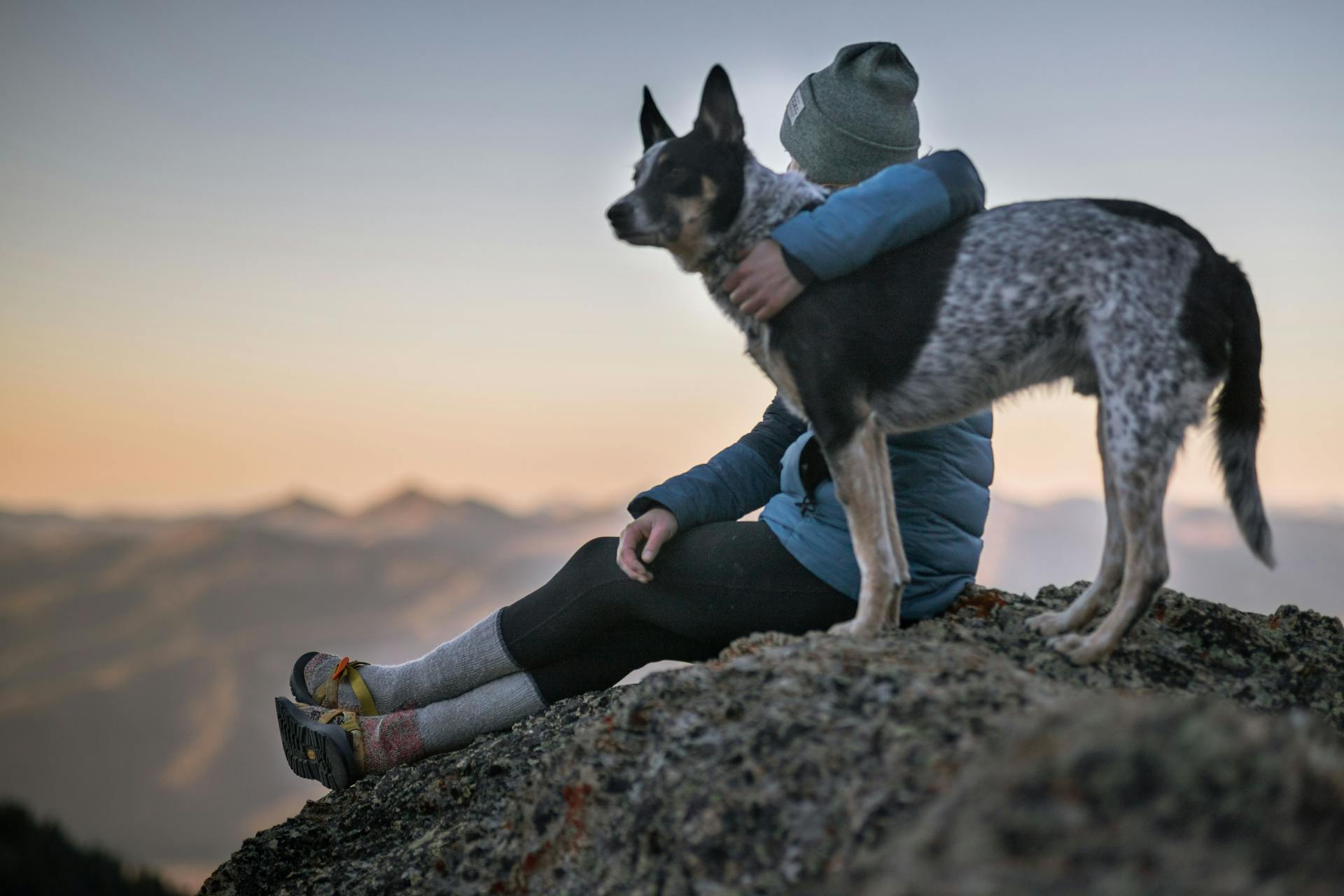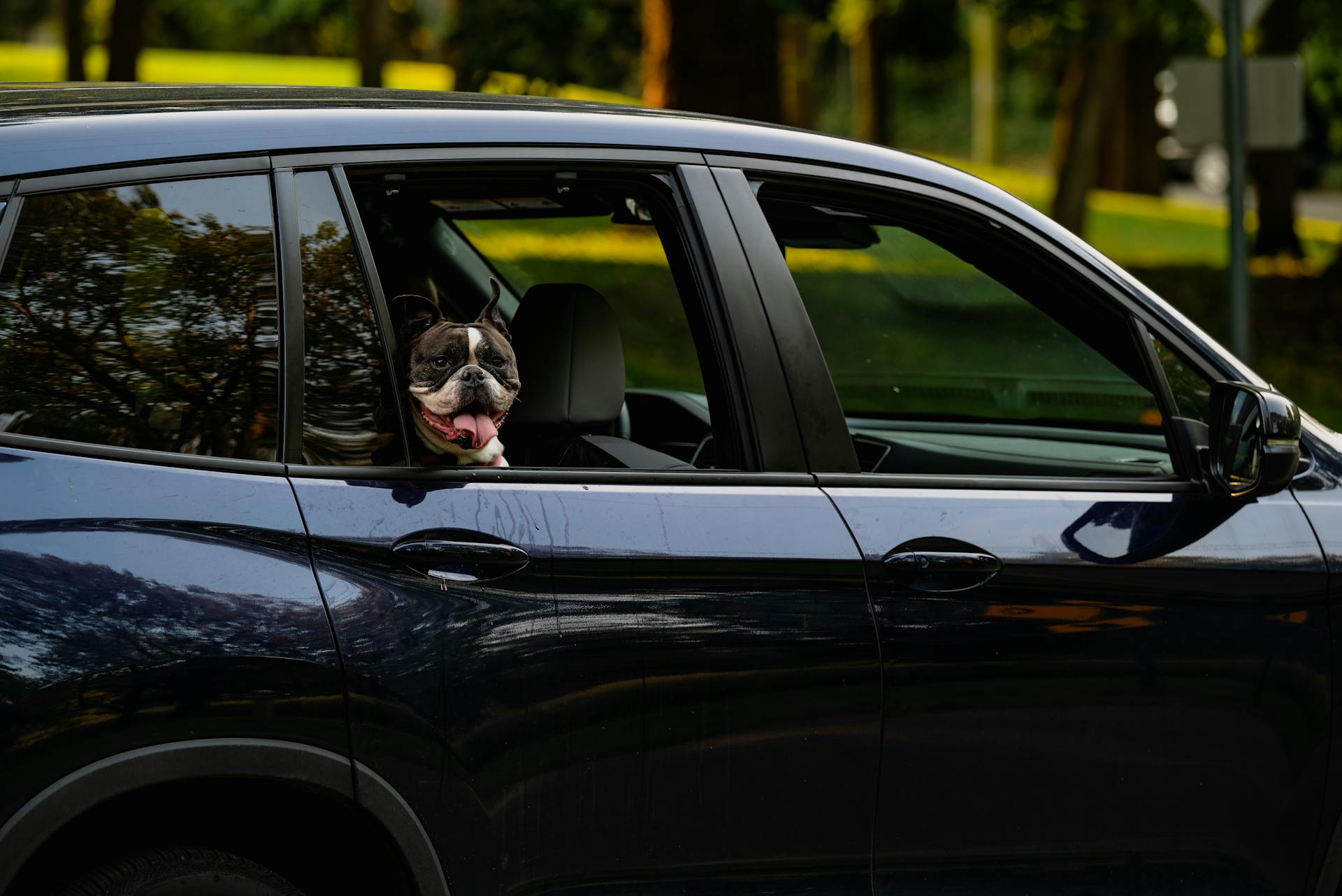
If your dog has eaten a bee, it's essential to act fast to prevent a potentially life-threatening reaction.
Dogs can eat bees without immediate harm, but some species, like Africanized honey bees, can cause more severe reactions.
The severity of the reaction depends on the type of bee, the amount of venom injected, and your dog's individual sensitivity.
In most cases, dogs will experience mild symptoms like itching, swelling, and redness at the site of the sting.
What to Do After a Sting
If your dog eats a bee, it's essential to monitor them closely for any signs of an allergic reaction or airway blockage. Monitor your dog for several hours after the incident, as symptoms can occur within 30-60 minutes after the sting, or even hours later.
If your dog is stung in the mouth or muzzle region, keep a close eye on them for signs of swelling that could be blocking their airway, such as frequent coughing, gagging, wheezing, or excessively drooling.
If your dog starts vomiting within 5-10 minutes after being stung, it could be a sign of anaphylactic shock, and you should head to your routine vet clinic or emergency vet immediately.
Signs of an allergic reaction include significant drooling, agitation, or sudden aggression, as well as hives, weakness or lethargy, wheezing or difficulty breathing, and extensive swelling beyond the sting site.
If your dog has a history of allergic reactions to bee stings, or if they've been stung multiple times, it's best to get them checked over by a vet as soon as possible.
Here are some critical signs to watch out for:
- Frequent lip licking
- Coughing
- Gagging
- Drooling
- Difficulty breathing
- Significant drooling
- Agitation or sudden aggression
- Hives
- Weakness or lethargy
- Wheezing or difficulty breathing
- Extensive swelling beyond the sting site
Treating a Sting at Home
If your dog has been stung by a bee and you're not sure if it's serious, you can try to care for the sting at home. If the stinger is stuck in the location your dog was stung, try to gently remove it by scraping against it with your fingernail or something rigid like a credit card.
Don't use tweezers, as they may squeeze out more poison into your pet. Take extra care if trying to remove a stinger from the mouth; even the most docile pets may bite when in pain and scared.
An ice pack or cold compress may help to minimize swelling and lessen some discomfort. You should also prevent your dog from scratching at the sting site; an e-collar (cone) might be useful.
If your dog is stung on their head, mouth, or nose, monitor for swelling and difficulty breathing, and take them to the vet immediately if you notice any signs of difficulty breathing, including wheezing, coughing, or drooling.
Here's a summary of what to do at home:
- Remove the stinger by scraping against it with your fingernail or a credit card.
- Apply an ice pack or cold compress to minimize swelling.
- Prevent your dog from scratching at the sting site with an e-collar (cone).
Remember, if your dog is stung multiple times, has a severe allergic reaction, or shows signs of difficulty breathing, you should take them to the vet immediately.
Anaphylactic Reactions and Allergies
Anaphylactic reactions can be a serious concern for dogs who eat bees. If your dog is stung by a bee, watch for swelling at the site of the sting.
Signs of an allergic reaction include significant drooling, agitation, or sudden aggression. If your dog is stung and shows any of these symptoms, it's essential to seek immediate veterinary attention.
Anaphylactic shock is a severe and life-threatening allergic reaction to an allergen, such as a bee sting. If your dog is going into anaphylactic shock, they may exhibit physical signs like decreased blood pressure, smooth muscle contraction, capillary dilatation, and edema.
If your dog is stung and starts vomiting within 5-10 minutes, or has increasingly pale gums, it could be a sign of anaphylactic shock. In this case, head to your routine vet clinic or emergency vet immediately.
Unfortunately, it's impossible to predict if a dog will have an allergic reaction to a bee sting. Your dog could have little to no reaction one time and have a severe allergic reaction the next, so it's crucial to closely monitor your dog after a bee sting and discuss the issue with your veterinarian if they have a severe reaction.
Warning Signs
Dogs eating bees can be a serious issue, and it's essential to recognize the warning signs to ensure your furry friend gets the help they need.
Excessive drooling is a common symptom of a bee sting, which can be caused by the venom injected into the dog's skin.
Pawing at the mouth or face is another indication that your dog may have been stung by a bee.
Swelling around the mouth or throat can also be a sign of a bee sting, and in severe cases, it can lead to difficulty breathing.
If your dog is experiencing rapid breathing, weakness, or even collapse, it's an emergency situation and requires immediate veterinary attention.
Here are some common signs of a bee sting in dogs:
- Drooling
- Coughing
- Gagging
- Frequent lip licking
- Difficulty breathing
The most common spots for bee stings on dogs include the pads of the feet, the mouth, and the face.
Monitoring your dog for excessive licking, pawing of a particular area of the face or body, swelling, and drooling can help you determine if they've been stung by a bee.
If you notice any of these symptoms, it's crucial to keep a close eye on your dog and seek veterinary care if necessary.
In severe cases, bee stings can cause an allergic reaction, which can lead to symptoms such as hives, weakness or lethargy, wheezing or difficulty breathing, and extensive swelling beyond the sting site.
If you suspect your dog has been stung by a bee, monitor them for any concerning signs, including signs of an allergic reaction, and contact your veterinarian for guidance.
Frequently Asked Questions
Can a bee sting make a dog sick?
Yes, a bee sting can cause a dog to become sick, potentially leading to anaphylactic shock if left untreated. If you suspect your dog is experiencing an allergic reaction, seek immediate veterinary attention.
Sources
- https://www.newhopeanimalhospital.com/site/blog/2022/12/30/bee-stings-dogs
- https://www.smalldoorvet.com/learning-center/what-to-do/dog-stung-by-bee/
- https://taconicvet.com/dog-ate-a-bee/
- https://www.metlifepetinsurance.com/blog/pet-health/what-happens-if-my-dog-ate-a-bee/
- https://www.boredpanda.com/funny-dogs-stung-by-bees/
Featured Images: pexels.com


